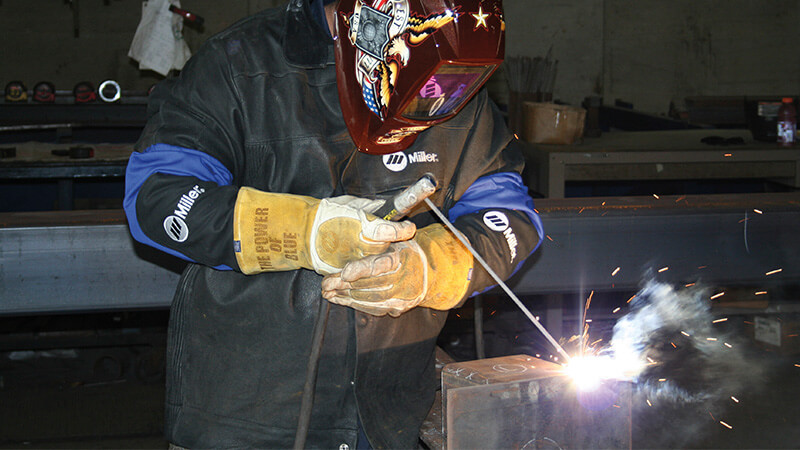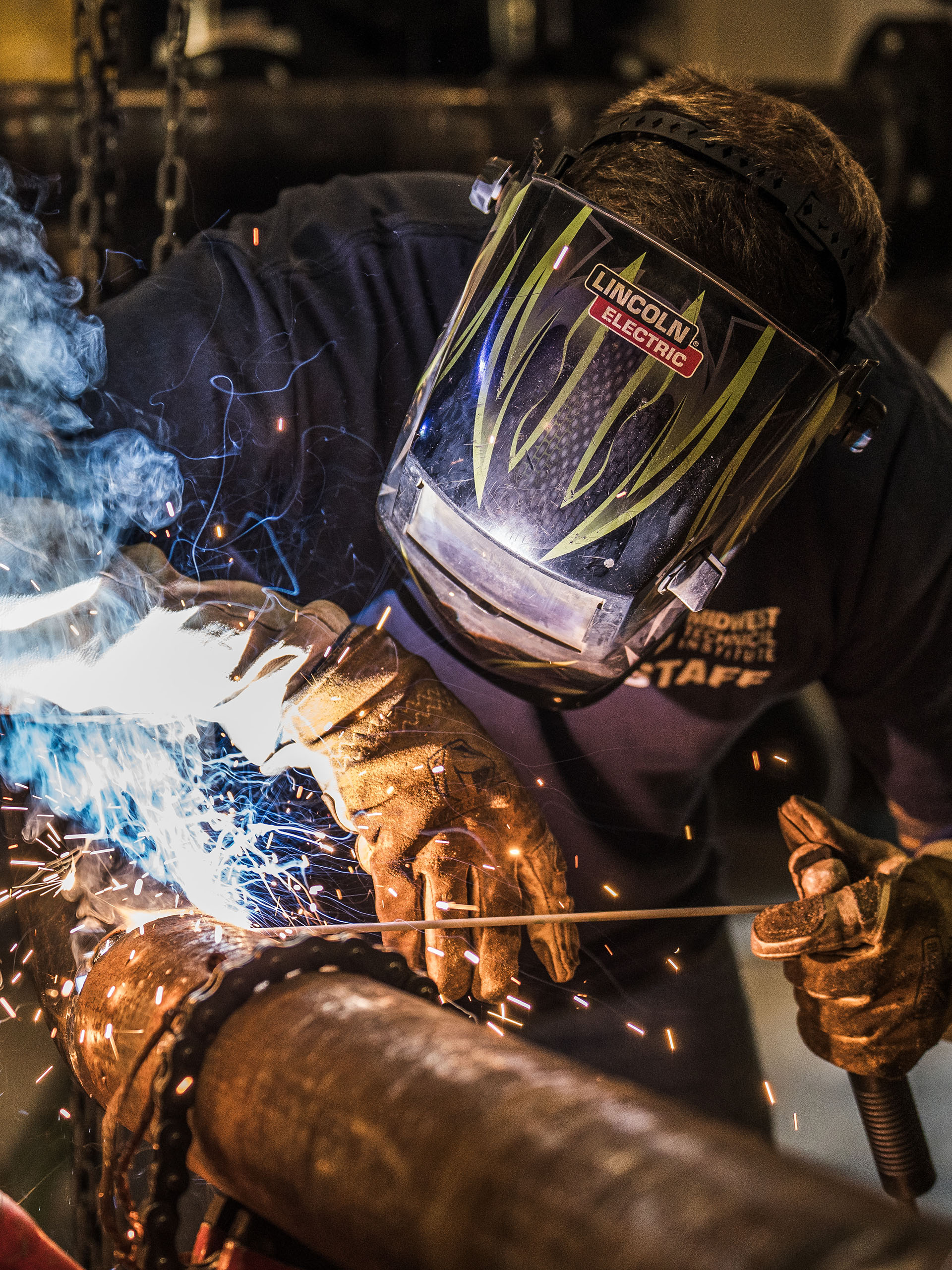Typical Welding Fixing Issues and How to Address Them Efficiently
Welding repair work often experience a series of issues that can threaten the integrity of the last item. Usual troubles consist of inadequate infiltration, porosity, and misalignment, to name a few. Each issue presents unique challenges that require specific techniques for resolution. Recognizing these issues is necessary for welders intending to enhance their outcomes and skills. This discussion will discover these common welding fixing problems and reliable approaches to resolve them.
Inadequate Penetration
Poor infiltration happens when the weld steel fails to totally fuse with the base product, leading to weak joints and possible structural failures. This issue typically comes from not enough warmth input, inaccurate electrode angle, or incorrect welding rate. Welders may experience insufficient penetration because of a mistake of the essential parameters for a specific material density or type. Additionally, contamination on the base material's surface area can prevent reliable bonding, exacerbating the trouble. To deal with insufficient penetration, welders must ensure ideal setups on their equipment and preserve a tidy work surface. Routine assessment of welds is suggested to identify any type of deficiencies early, enabling timely adjustments and the prevention of jeopardized architectural honesty in bonded assemblies.
Porosity
Porosity is a common flaw in welded joints that manifests as little gas bubbles caught within the weld steel. This issue can endanger the integrity of the weld, causing decreased strength and prospective failing under stress. Montana Mobile Welding and Repair Belgrade Welding. Porosity usually occurs from contamination, moisture, or inappropriate welding methods, which permit gases to get away right into the liquified weld swimming pool. To address porosity, welders ought to assure correct surface prep work, keep a clean working atmosphere, and use suitable welding parameters. Furthermore, picking the appropriate filler material and securing gas can mitigate gas entrapment. Routine examination and screening of welds can assist identify porosity early, guaranteeing timely corrective actions are taken, therefore maintaining the quality and reliability of the welded framework
Misalignment
Imbalance in welding can emerge from numerous variables, consisting of improper arrangement and thermal development. Understanding the root creates is essential for effective resolution. A number of improvement techniques are offered to realign elements and guarantee structural stability.
Sources of Misalignment
Welding imbalance frequently comes from a range of underlying problems that can compromise structural integrity. One primary reason is incorrect fit-up of parts prior to welding, which can result in spaces and uneven surfaces. Variations in thermal growth throughout the welding process can likewise result in distortion, particularly if the products being joined have various coefficients of development. Furthermore, inadequate fixturing and clamping might stop working to hold elements firmly in position, resulting in activity throughout welding. Inadequately maintained equipment, including welding machines and tools, might present inconsistencies in the weld grain, additional adding to misalignment. Finally, operator mistake, originating from not enough training or experience, can likewise play a considerable duty in creating misaligned welds.
Correction Strategies Available
Addressing imbalance properly needs a mix of rehabilitative methods customized to the particular concerns handy. One usual technique is using fixtures or jigs to hold elements in the right position during welding, ensuring consistent positioning. In addition, preheating the materials can aid minimize distortion and enhance fit-up. For significant misalignment, mechanical realignment methods, such as making use of hydraulic jacks or clamps, can be utilized to correct the placement before welding. Post-weld warmth therapy may additionally be needed to ease stresses triggered by imbalance. Careful assessment and change throughout the arrangement stage can prevent imbalance issues from ending up being substantial problems, advertising a smoother welding procedure and improving overall structural stability.
Distortion
Distortion is an usual challenge in welding that can occur from different elements, consisting of uneven heating & cooling. Comprehending the root causes of distortion is essential for executing effective avoidance strategies. Addressing this problem not just improves architectural stability yet additionally boosts the overall high quality of the weld.
Root causes of Distortion
When based on the extreme warm of welding, products often go through modifications that can bring about distortion. This phenomenon primarily occurs from thermal development and contraction throughout the welding procedure. As the weld area warms up, the product broadens; upon cooling, it contracts, which can produce interior anxieties. Furthermore, irregular home heating across a workpiece can worsen these tensions, leading to bending or bending. The type of material also plays a substantial function; steels with varying thermal conductivity and coefficients of growth may react in different ways, resulting in unpredictable distortions. In addition, poor joint design and inadequate fixturing can add to imbalance throughout welding, raising the possibility of distortion. Understanding these causes is important for reliable welding repair service and avoidance approaches.
Avoidance Techniques
Efficient avoidance strategies for distortion during welding focus on regulating warmth input and making certain correct joint style. Keeping a constant heat input assists to lessen thermal growth and tightening, which can result in distortion. Making use of methods such as pre-heating the work surface can also minimize the temperature level gradient, advertising uniform home heating. Additionally, selecting appropriate joint designs, such as T-joints or lap joints, can boost stability and lower stress focus. Implementing appropriate fixturing to protect the work surfaces in position better aids in keeping positioning during the welding process. Staggered welding sequences can distribute warm extra evenly, stopping localized distortion. By applying these approaches, welders can substantially lower the possibility of distortion and boost the total top quality of their welds.
Breaking
Cracking is a typical problem encountered in welding repair services, usually resulting from different elements such as inappropriate cooling prices, product selection, or poor joint prep work. The occurrence of fractures can greatly compromise the integrity of the weld, causing possible failings during operation. To address this problem, welders need to first analyze the source, ensuring that materials are compatible and properly chosen for the particular application. Additionally, controlling the air conditioning rate throughout the welding procedure is essential; quick air conditioning can generate anxiety and cause cracking. Correct joint design and prep work likewise add to lessening the risk. Executing these strategies can boost weld high quality and longevity, ultimately decreasing the possibility of cracking in finished weldments.

Insufficient Blend
A considerable concern in welding fixings is insufficient combination, which occurs when the weld steel does not effectively bond with the base product or previous weld passes - Belgrade. This problem can result in weaknesses in the joint, potentially compromising the honesty of the welded framework. Variables contributing to incomplete combination include inadequate warm input, incorrect welding strategy, and contamination of the surface areas being joined. To resolve this issue efficiently, welders should ensure correct pre-weld cleaning and surface preparation, in addition to readjust their welding parameters to achieve ample penetration and blend. Routine evaluation during the welding process can likewise help recognize incomplete combination early, permitting timely restorative steps to enhance the general top quality of the weld
Overheating
While welding repair services can boost structural honesty, overheating provides a substantial obstacle that can cause material deterioration. Excessive warm throughout welding can change the mechanical residential properties of steels, causing reduced stamina, boosted brittleness, and bending. This phenomenon is particularly crucial in high-stress applications where structural dependability is vital. Identifying getting too hot can include informative post aesthetic evaluations for staining or distortion, as well as monitoring temperature during the welding procedure. To minimize the risks related to getting too hot, welders must utilize ideal methods, such as managing heat input, changing traveling speed, and utilizing appropriate filler products. Additionally, implementing pre- and post-weld heat therapies can aid recover product buildings and boost the overall top quality of the repair service, making certain lasting performance and safety and security.
Frequently Asked Questions
What Are the Common Signs of a Welding Issue?

Just How Can I Test My Welds for Top quality?
To evaluate welds for quality, one can utilize aesthetic inspections, ultrasonic screening, and radiographic methods. Each strategy ensures structural stability, determines defects, and verifies adherence to specified requirements, eventually improving the dependability of the welded joints.
What Safety Safety Measures Should I Take While Welding?
When welding, one need to focus on security by wearing ideal personal protective devices, making sure appropriate ventilation, securing combustible materials away, maintaining a clean workspace, and recognizing surroundings to stop injuries and mishaps.
Can I Repair a Weld Without Redesigning the Entire Joint?
Repairing a weld without redesigning the whole joint is feasible, depending on the damage (Montana Mobile Welding and Repair). Techniques such as grinding, including filler product, or utilizing a welding process can properly resolve certain imperfections while preserving the surrounding framework
What Tools Are Vital for Reliable Welding Services?
Vital tools for effective welding fixings consist of a welding machine, cord brush, grinder, protective equipment, clamps, continue reading this and filler products. Each tool plays a crucial function in ensuring top quality and safety and security during the repair procedure. Porosity generally arises from contamination, dampness, or inappropriate welding strategies, which permit gases to leave right into the liquified weld pool. Poorly conserved equipment, consisting of welding equipments and tools, might present inconsistencies in the weld bead, further contributing to misalignment. When subjected to the intense heat of welding, materials typically go through adjustments that can lead to distortion. Splitting is a common issue come across in welding repair work, commonly resulting from different variables such as inappropriate cooling prices, product selection, or inadequate joint prep work. A considerable concern in welding fixings is blog here insufficient fusion, which occurs when the weld metal does not sufficiently bond with the base material or previous weld passes.